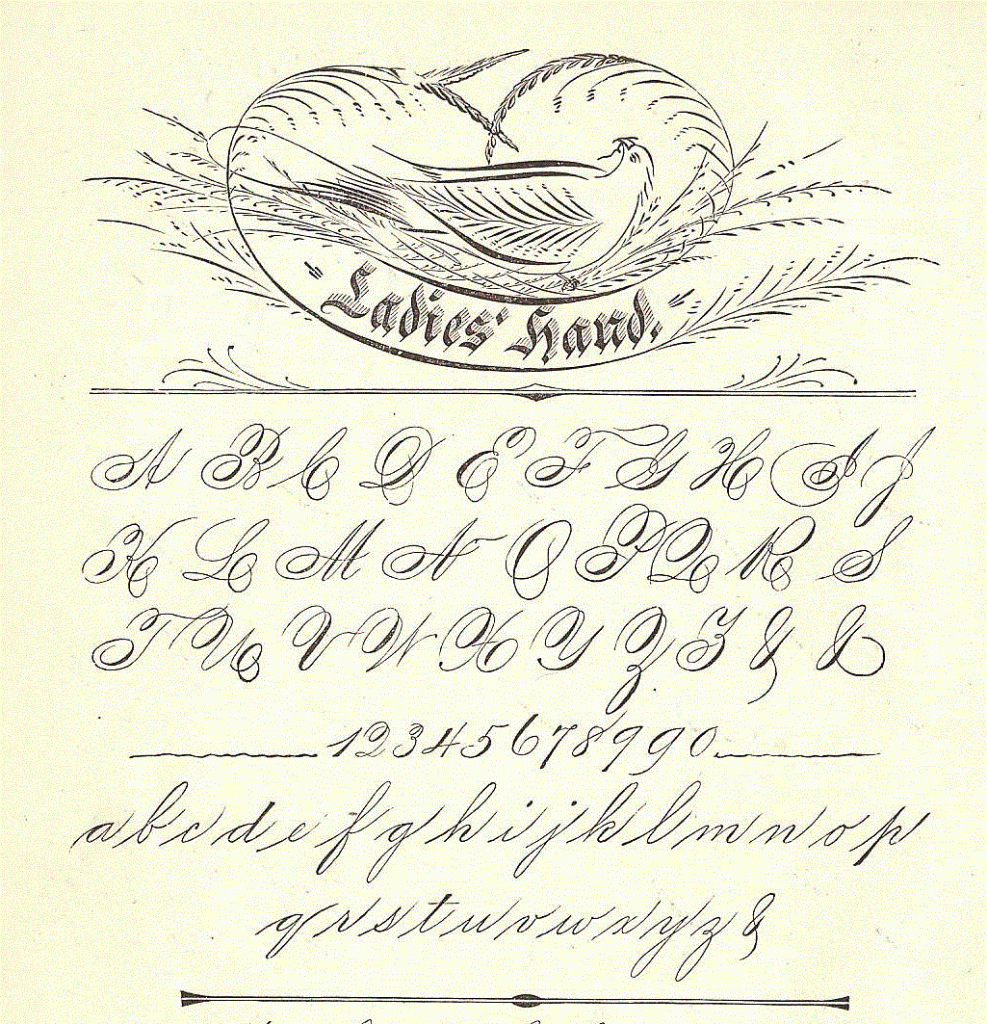Now that you have found your primary sources, you may have discovered that some are written in font that is unfamiliar.
If you went to school during covid, you may find these sources particularly hard to parse, as teachers have been less likely to give written feedback and to give you chances to practice cursive.
What to do?
A. The first thing is to determine when your document is from. If it is written in English the following scripts can be your guide.
- If the writing is from after 1890, it is likely that it uses the Palmer method (or a variant on it). If your document is from that era, download this image to keep next to your document in order to “decode” what is written.

2. If your document is written by someone who went to school c. 1860-1890, they may have learned the Spencerian script

Lowercase letters of this script look similar to the Palmer Method, but the uppercase is much more ornate. Again download the font to place next to the sample you are aiming to read.
3. If your document is from prior to 1860, it most likely use an antiquated script that is difficult even for people raised using cursive to read. To build your early handwriting chops, try this Early American Handwriting Game developed by Laura Leibman. Also check out this Colonial American Handwriting Study Guide that covers
- What kind of Evidence does Handwriting Provide?
- A Brief Cultural History of Early American Handwriting
- Reading Colonial Handwriting
Once you have some practice, try you hand transcribing some of the handwritten texts in the archive that are transcribed in Jews Across the Americas. How did you do? Keep track of the letters that seem to trip you up before turning to a document that hasn’t been transcribed by anyone yet.
B. If you are looking at a document in Spanish, it will use a different script even if it is from the same era. Check out this Spanish Paleography Digital Tool or these guides for more help.
Need more help? Check out these great resources:
- Carlin, A. Roberta. A Paleographic Guide to Spanish Abbreviations, 1500-1700. Puerto Rico: A.R. Carlin, 1999.
- Gladstone, Kate. Read Cursive Fast. Forsyth, MO: National Autism Resources, 2021.
- Ryskamp, George R. et al. Mastering Spanish Handwriting and Documents, 1520-1820. Baltimore: Genealogical Publishing Company Incorporated, 2023.
- Stryker-Rodda, Harriet. Understanding Colonial Handwriting. Baltimore: Genealogical Publishing Company, 1980.
- Thornton, Tamara Plakins. Handwriting in America: a Cultural History. New Haven: Yale University Press, 1996.
